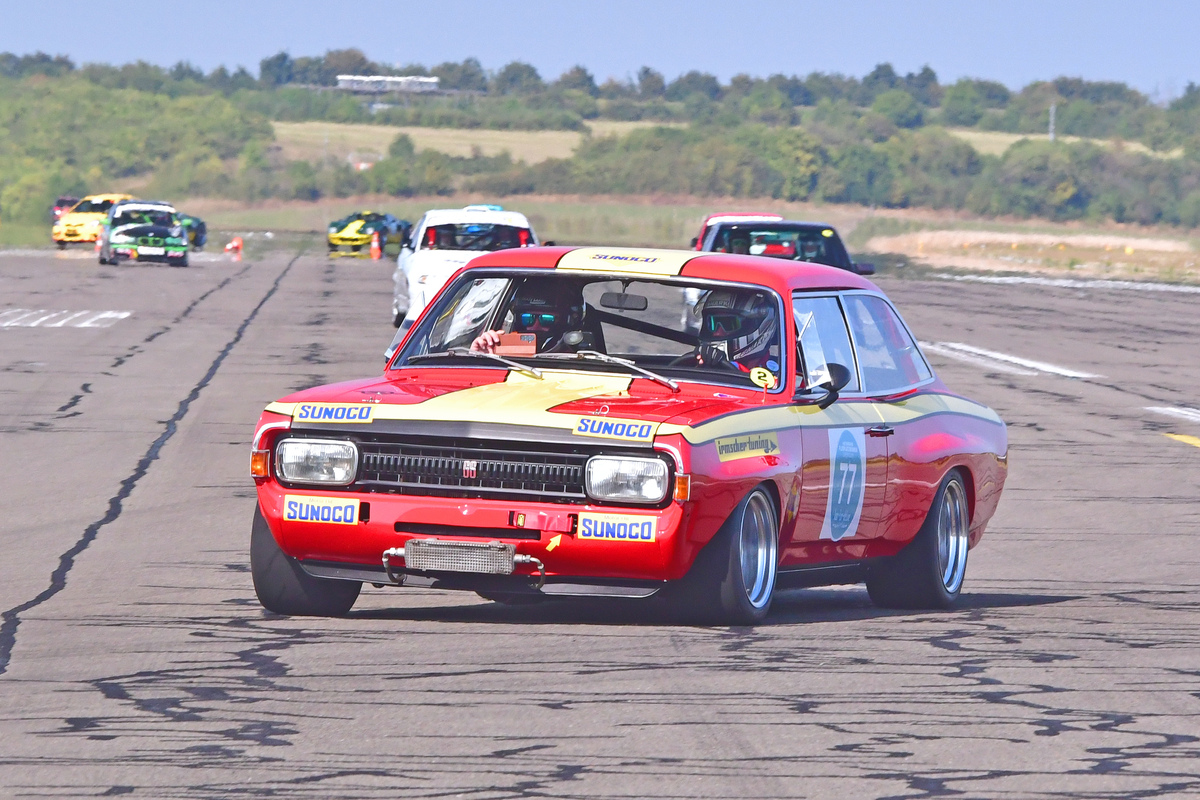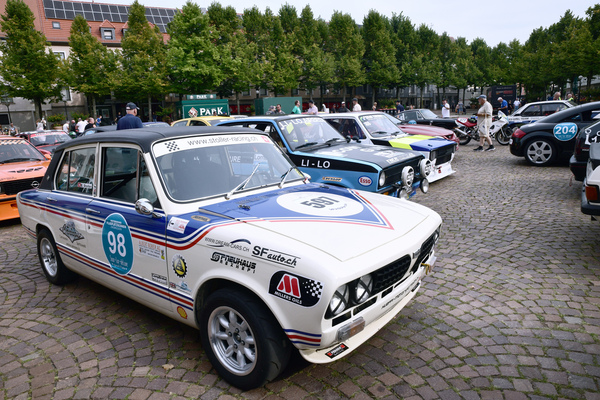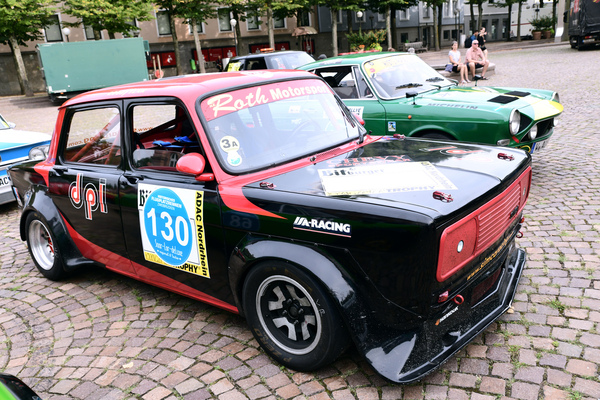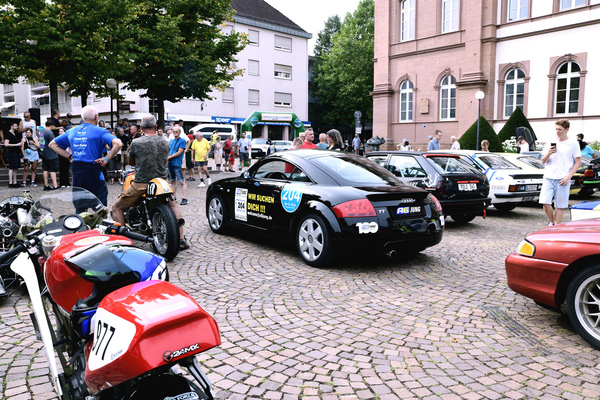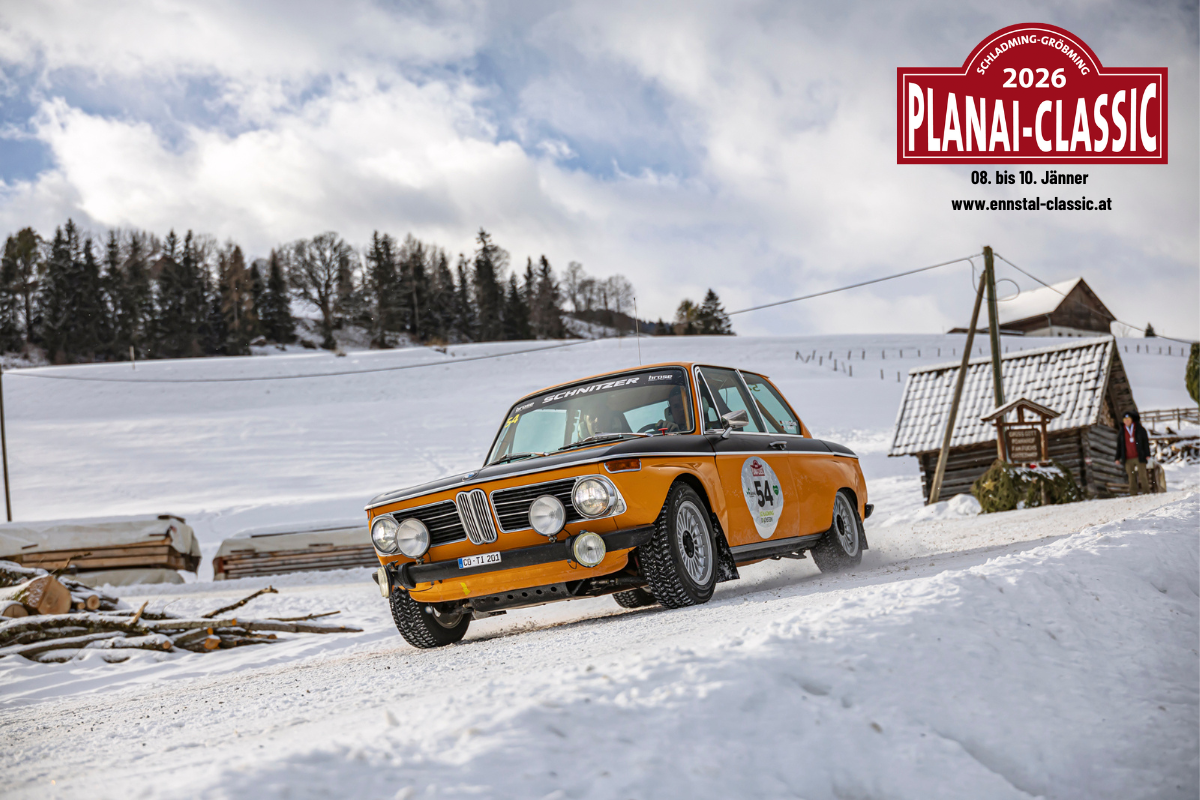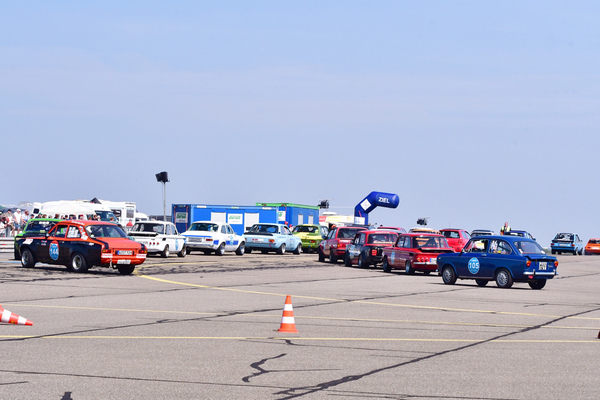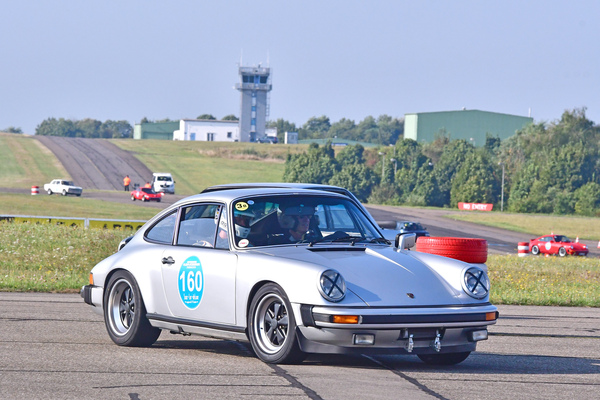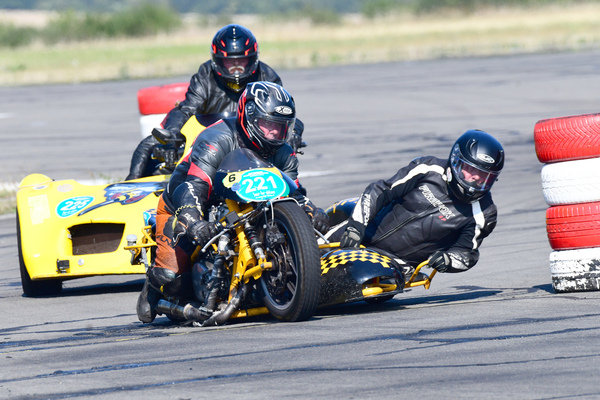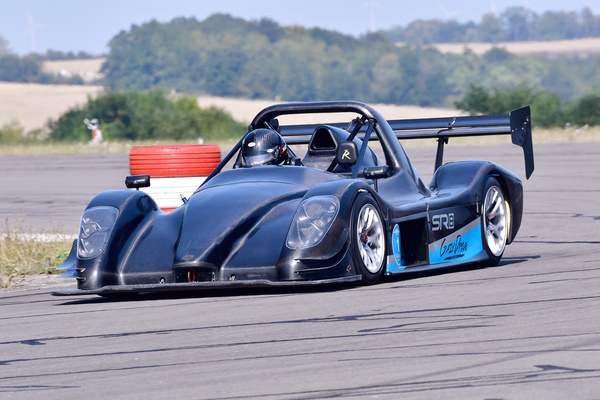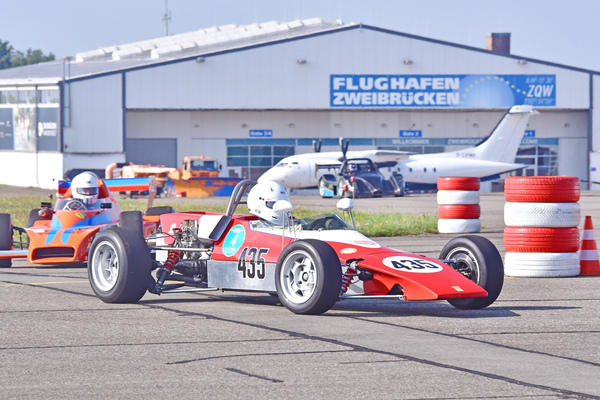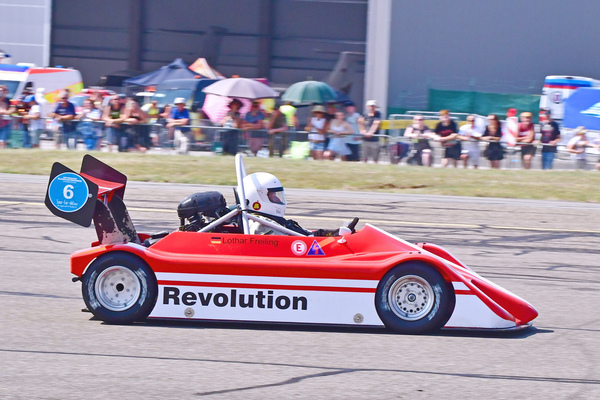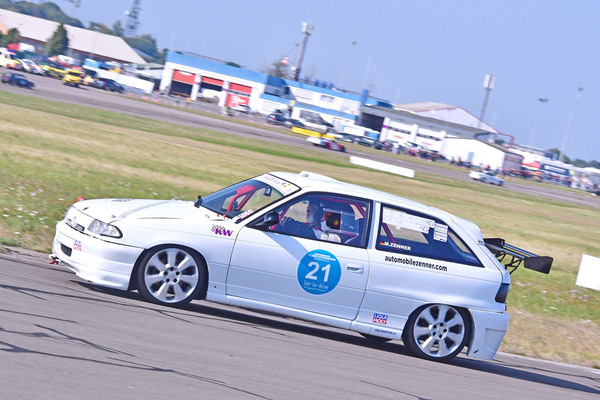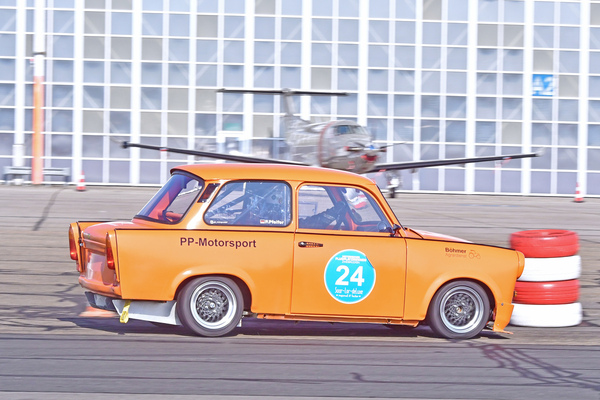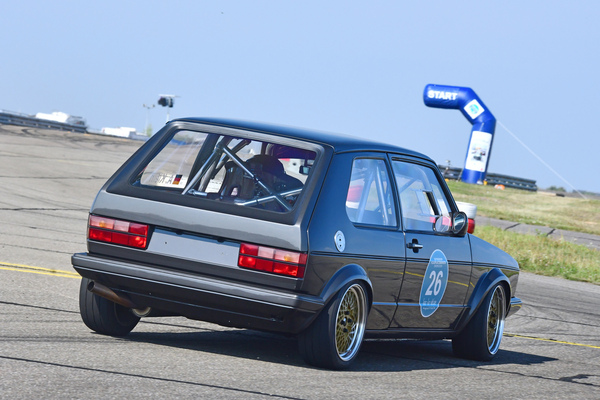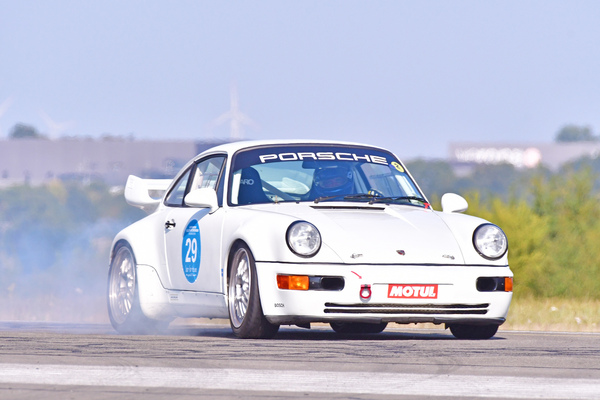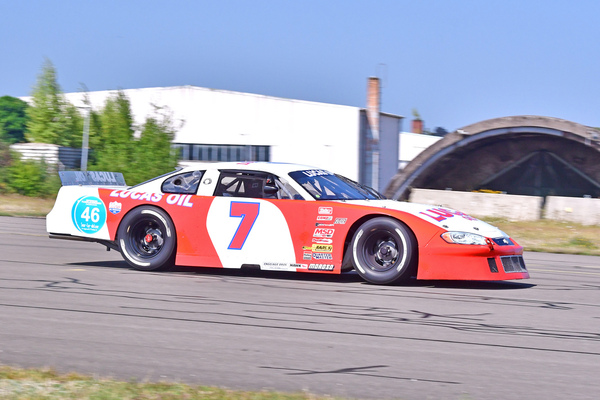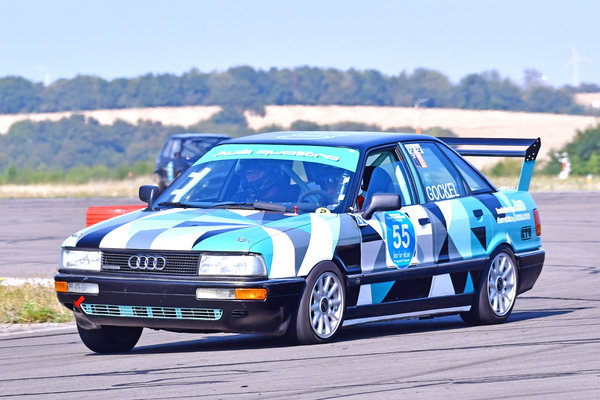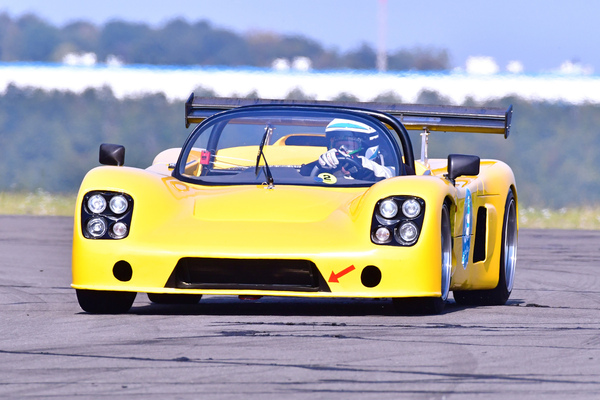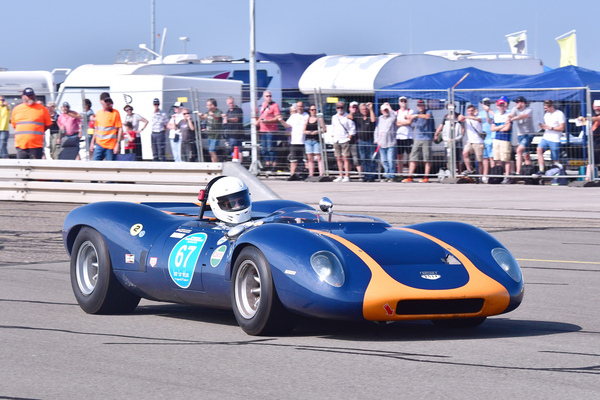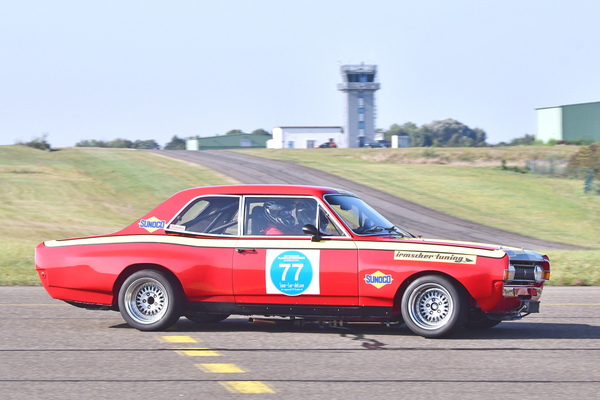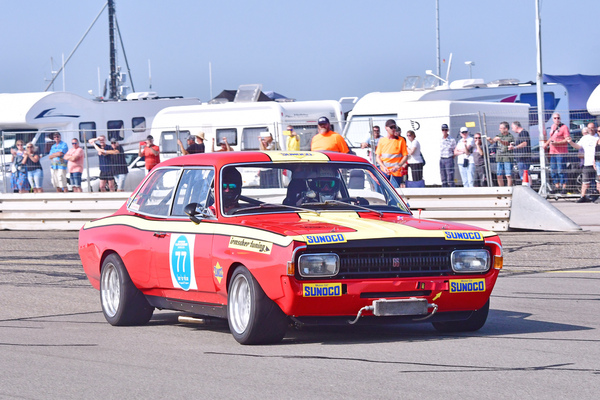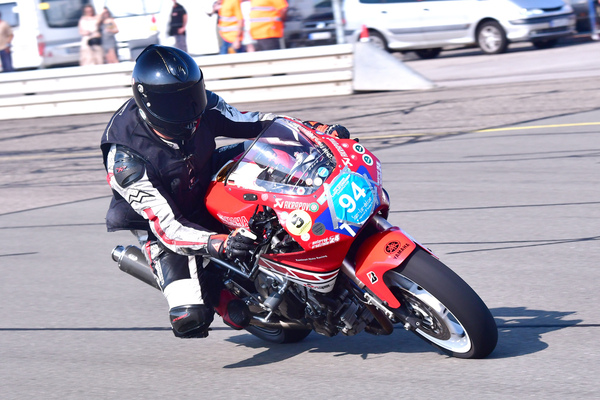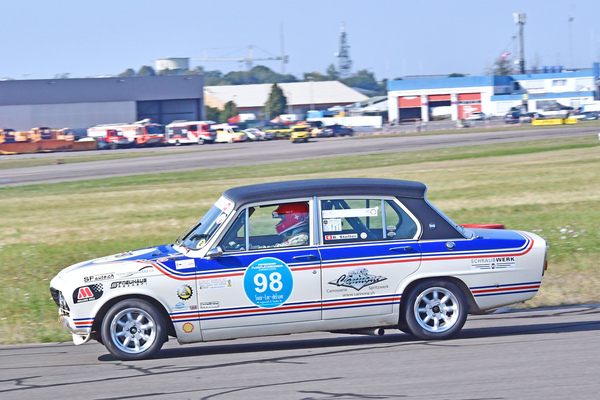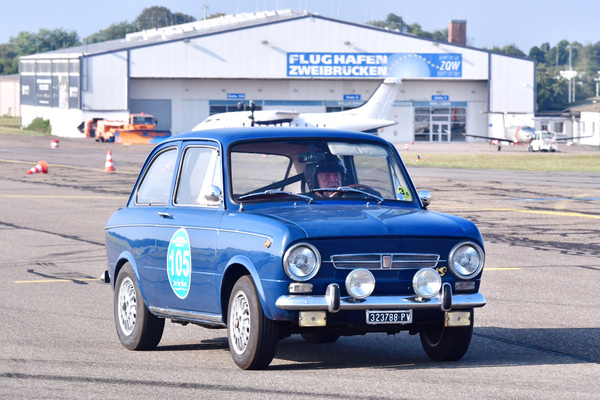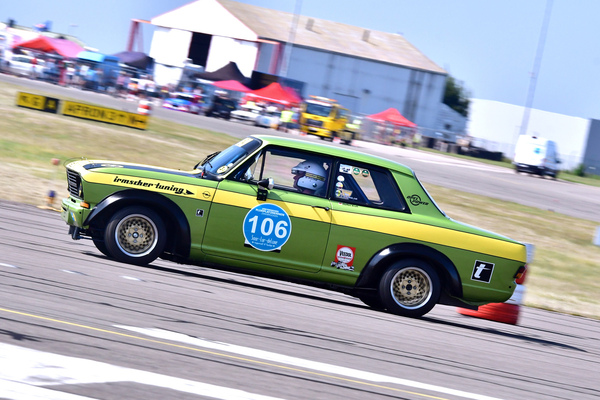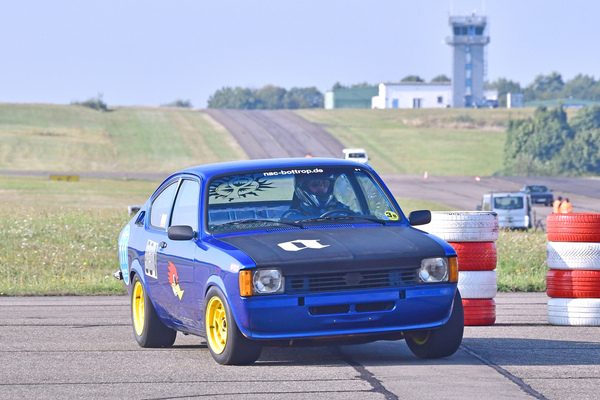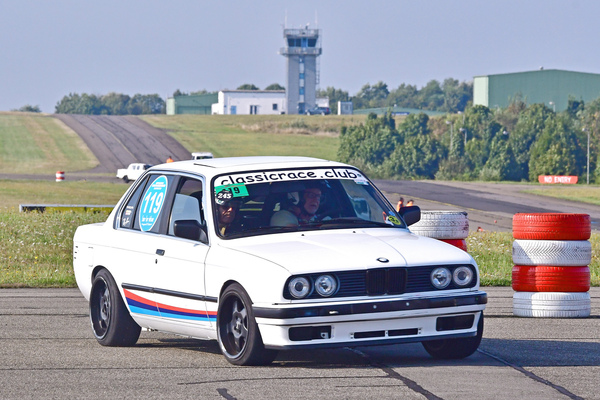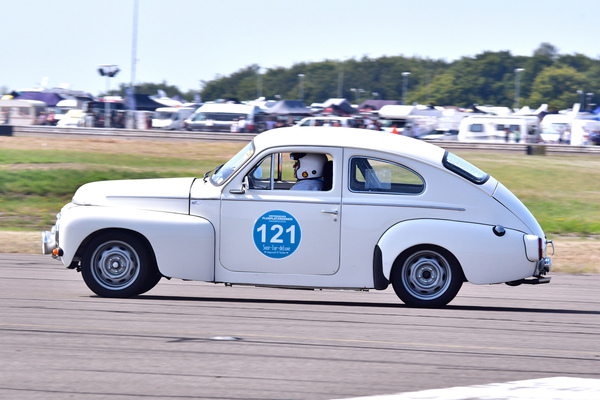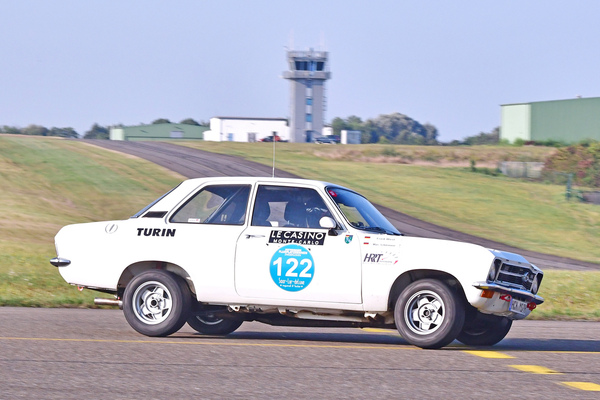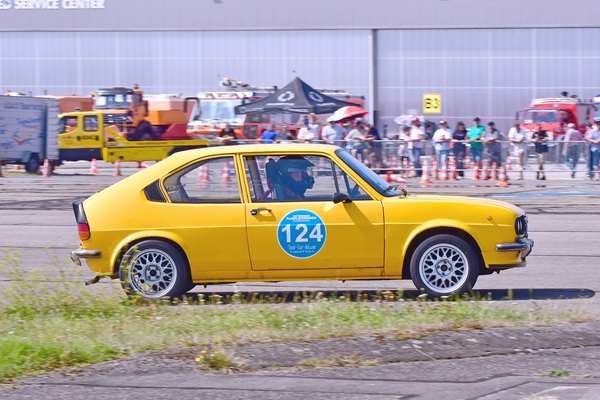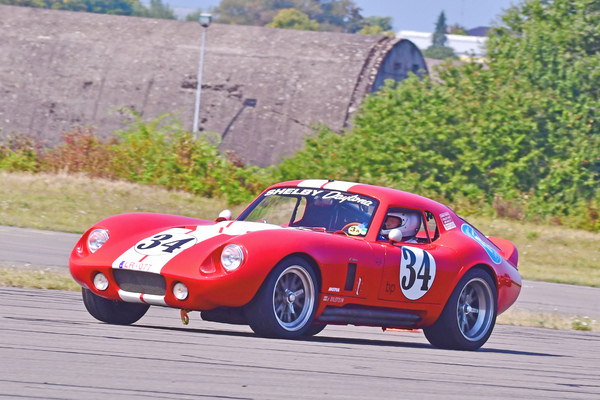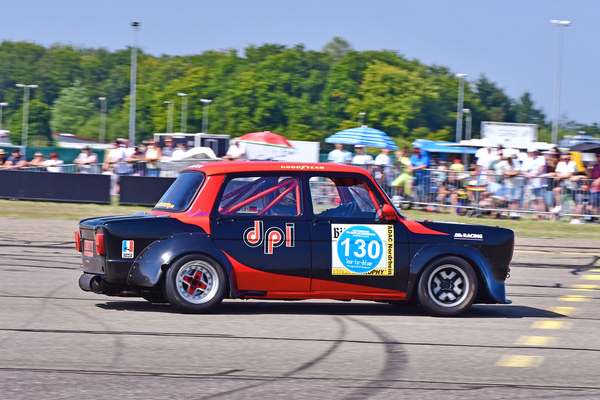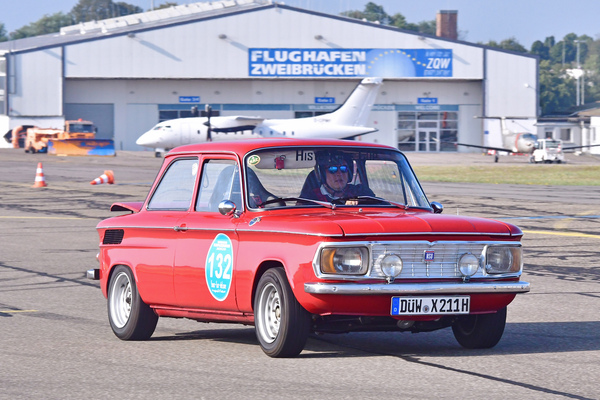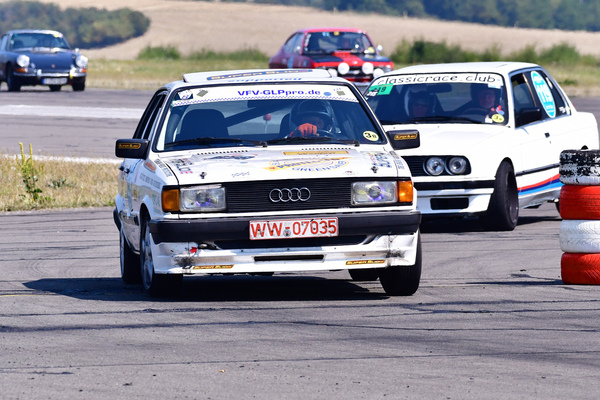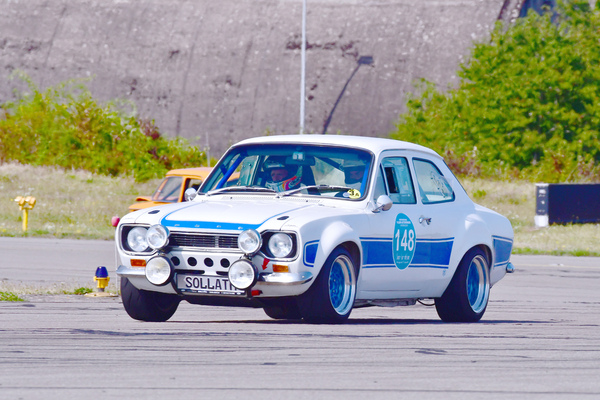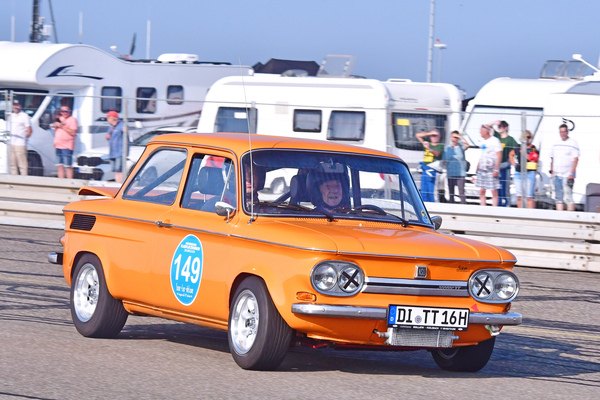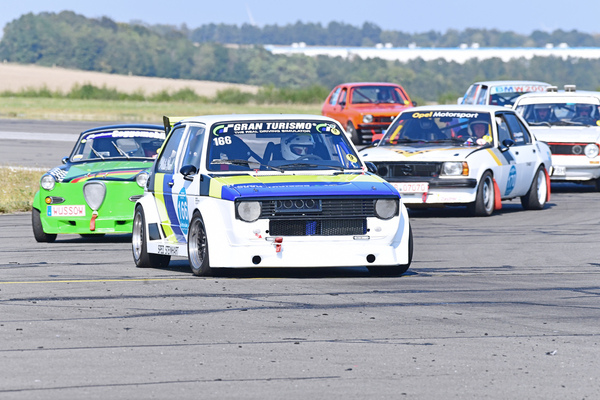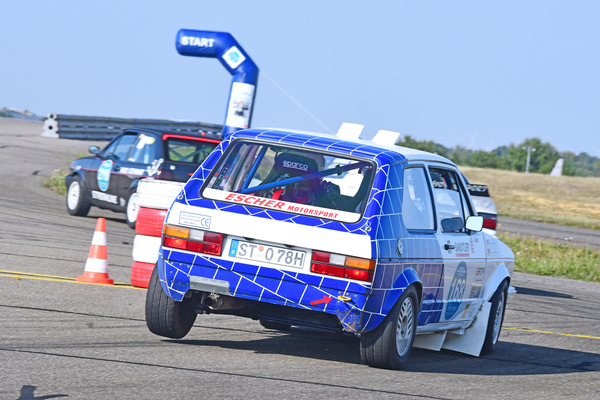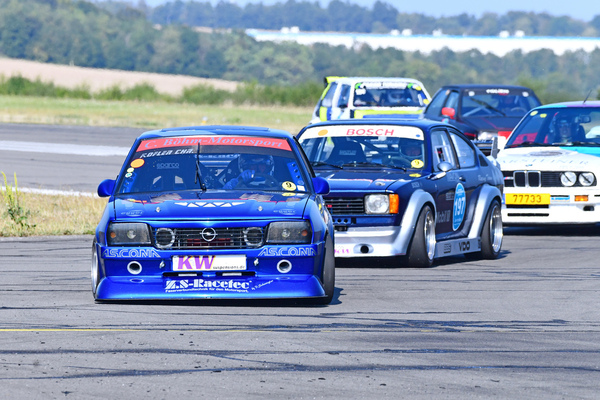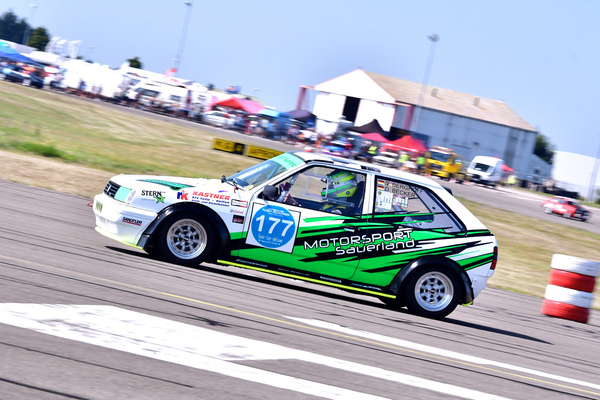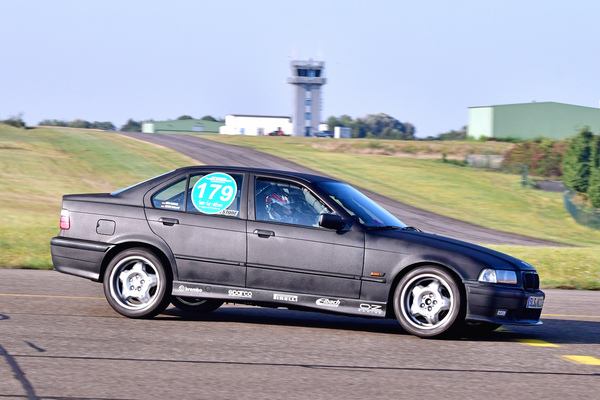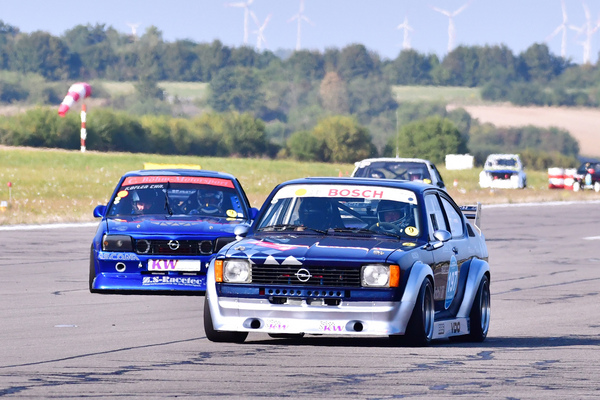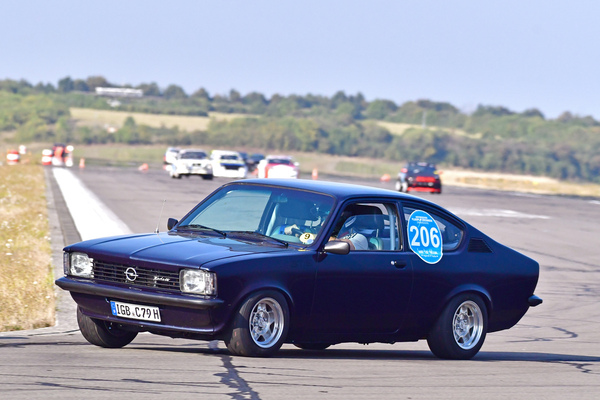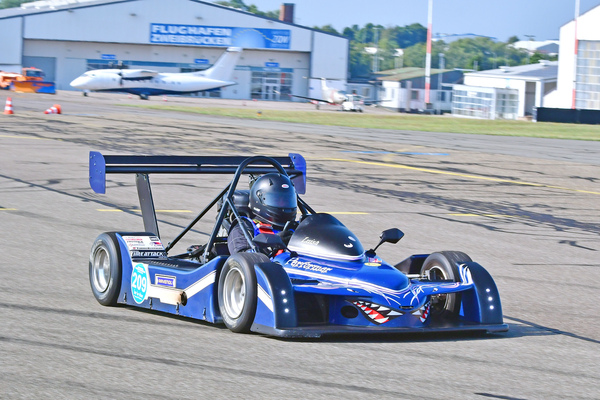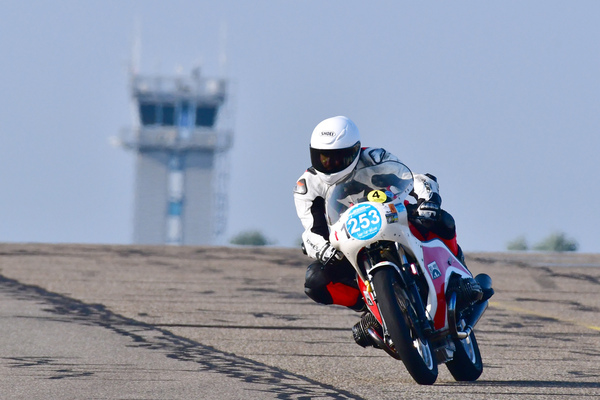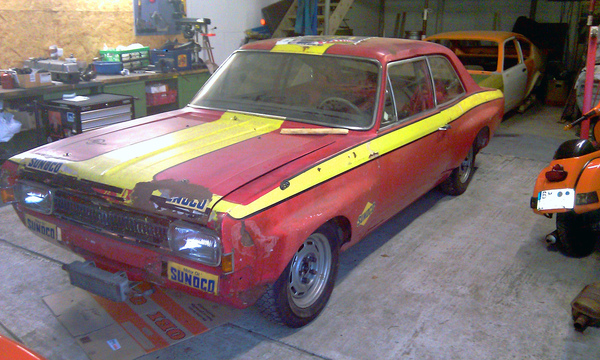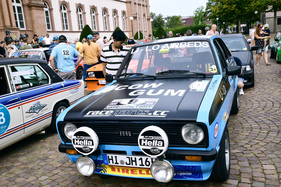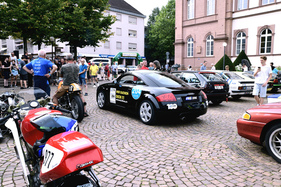The historic airfield race in Zweibrücken celebrated its fifth mini-anniversary on the transition weekend from August to September. With over 200 entries, organizer Wolfgang Heinz was naturally delighted. However, there was a small "fly in the ointment" (or rather a luxury problem): although the classic/youngtimer class had already been split into two, the organizer had to reject further entries and put them on a waiting list when there were 60 starters. More than 30 cars would simply be too many for the almost two-kilometer-long airfield runway. It was pleasing to see that the motorcycle classes and the formula car class were also really well filled this time.
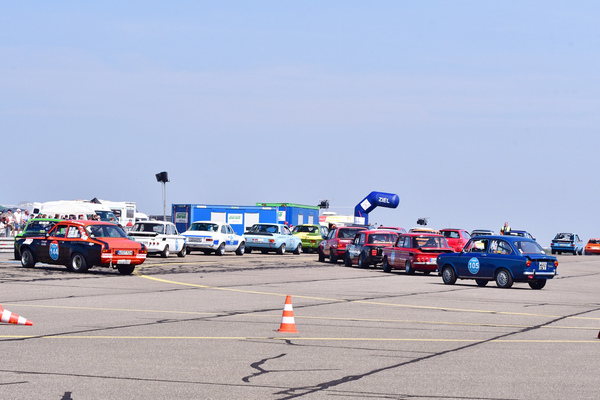
Flight operations and motorsport in one
The airfield in Zweibrücken has two special features: Firstly, it is not completely closed even during the racing event. There are so-called flight slots during which aircraft movements are possible. The chicane on the runway, which is built with tire stacks and pylons, is then quickly cleared, swept and regular flight operations can take place again.
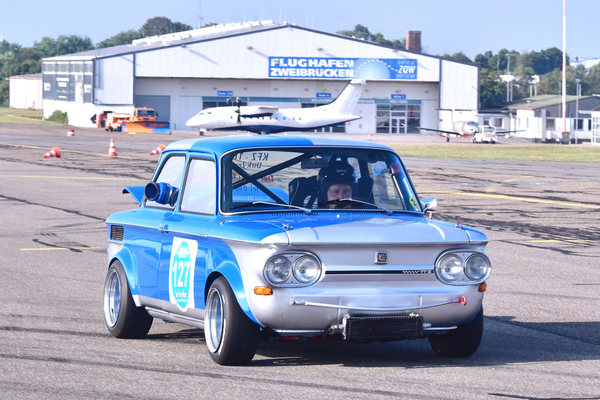
The Hertha BSC team, for example, who had played a second division match in neighboring Kaiserlautern and had flown in and out of the German capital, made use of this. The second special feature is the rather generous volume regulation of 130 dB(A), while many regular racetracks have to make do with 98 or even just 96 dB(A) on non-noise days. This makes it possible to run NASCAR cars, older formula cars, touring cars or historic motorcycles in their original configuration.

Another highlight on Friday evening was the police-escorted parade from the airport grounds along a country road to the Schlossplatz in the center of Zweibrücken. With the side effect that one or two visitors to the city - who may not have had the event on their radar - spontaneously decided to visit the airfield. It's good to see that there are still communities that are so open to motorsport in this day and age. In the end, there were over 3500 spectators. Including many families with their children, who were fascinated by the "old iron" on the track in two days of sunshine and summery, almost too hot temperatures.

Not a "real" race
Despite the term "race", these were in fact regularity tests or, in some classes, pure demo rides. Of course, the focus was on having fun, but the GLP classes in particular were of course driven with pinpoint accuracy and offered good historic motorsport. Although the two races on Saturday were timed, they were not included in the classification. It was only on Sunday that it was "down to the wire", and the participants had to try to repeat their two setting times seven times each. In Class 2 (racing cars), Götz Horn and Gabrielle Finken in the BMW 318ti Compact (1997) managed this best. The pair finished with 9.05 penalty points and were also able to repeat their victory from the previous year.
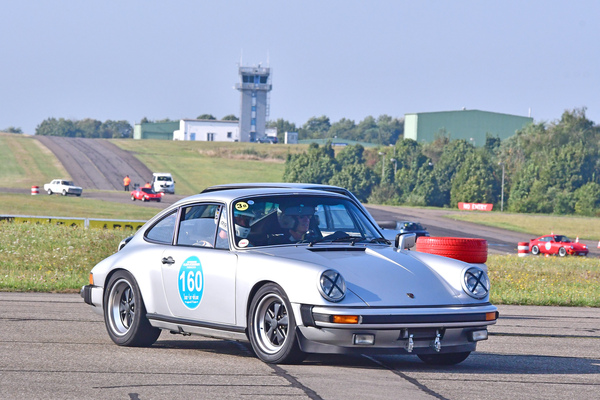
Class 3, which was split into two separate fields, was dominated by Luxembourg's Thomas Langer and Ken Wiltgen in a 1978 Porsche 911 with 17.75 points. The motorcycles were divided into the categories up to 1981 and after. In the "old" bikes, Albert Rank came out on top with 11.12 points on his 1968 Ducati 250 MK III. Frank Schwolow took victory in the "new" category on his 1996 Yamaha YZF 750. If there was an overall ranking for all participants, he would have won it with 8.86 points. Last but not least, mention should also be made of the sidecars, where the duo Oliver Hagel and Peter Heitmann came out on top with 16.55 points on a Yamaha XS 650 (1972).
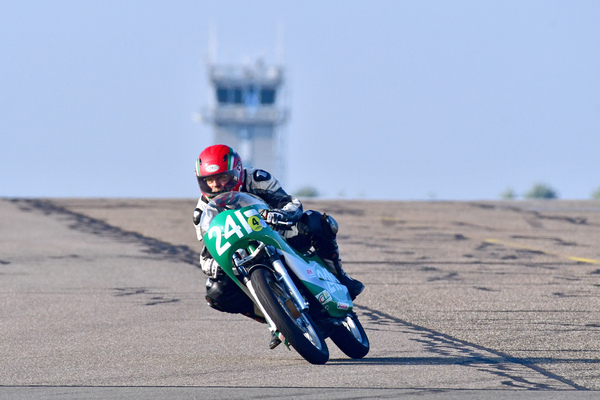
49 years of service life
The brothers Matthias and Christian Siegmund had been working for several years on a replica of an Opel Commodore in racing version, which was already quite advanced. While searching for photos, Christian stumbled across an advertisement from Switzerland offering an original Opel Commodore GS 3000 from Irmscher. Contact was quickly made and the car returned to Germany after almost half a century in exile in Switzerland. Although the car had been parked outside for years, it was still in surprisingly good condition. The seller had acquired the car in 2009 and had brought it back to dry land, so to speak, but ultimately never started restoring it.
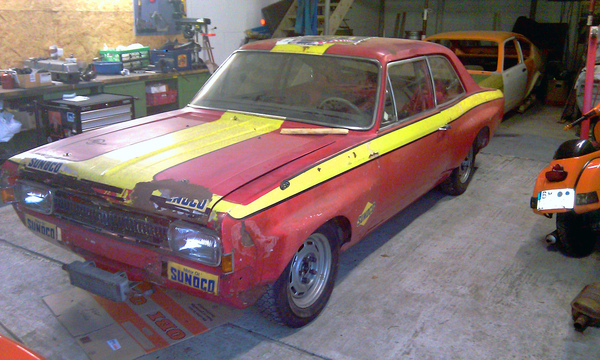
The two Siegmund brothers took over. The Irmscher racer had made its racing debut in 1970, at that time with the driver Dieter Nakaten, who had been active with it for two years with moderate success. Irmscher's last outing was in 1972 with Willi Kauhsen at the Nürburgring and ended prematurely with engine damage. The car then went unrepaired to Heiner Bösch in Switzerland. Bösch converted the engine to dry sump lubrication, which made it much more reliable. The Swiss driver competed in the Swiss Hill Climb Championship and international hill climbs for three years.

The racing career finally came to an end at the hill climb in Hemberg in 1975, when a connecting rod broke. The engine was actually supposed to be repaired at the time, but after the Opel's crosshead, among other things, was stolen during a workshop break-in, the car ended up in a yard (due to a lack of adequate replacements) and was left to rot. Those days were finally forgotten in Zweibrücken, where the red racer shone again in its former glory and finally breathed racing air again after a break of almost 50 years. However, this was still with a near-series engine, as long as Matthias Siegmund was still working on a "real" racing engine.
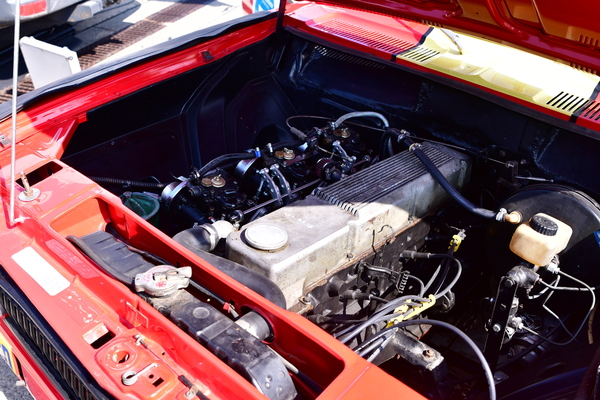
Split paddock next year
Finally, a look into the future. The date for the sixth edition of the airfield race has been set for the last weekend in August (29-31.08.2025). In addition, the two-wheelers and cars will then be divided into two different paddocks, which should speed up entry considerably.
